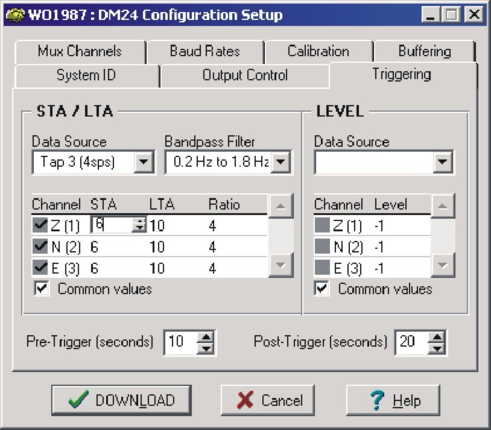Dsp Trigger Serial Number
Jan 27, 2018 - Conversion trigger timing in DSP mode. It's clear that the number loaded is arbi-trary. DSP serial port setup.
Aromapsihologiya i v sakov. Tensilica HiFi DSPs for Audio, Voice, and Speech Audio, Voice, and Speech Processing Couldn’t Be Easier Looking for the best quality audio, voice, and/or speech processing core for your next design? With all the software already ported for immediate deployment? With the largest selection of audio DSPs, software packages and ecosystem of partners, adding audio to your next SoC couldn’t be easier. Make the choice that more than 100 licensees have already made — select Cadence ® Tensilica ® HiFi DSPs for all your audio-, voice-, and speech-processing requirements. Largest Partner Ecosystem with Expansive Range of Audio Software Cadence has your audio software needs covered with over 125 partners in its comprehensive audio ecosystem. These companies range from industry giants like Dolby and DTS to smaller companies providing innovative sensor fusion, always-on, sound enhancement, and noise reduction software.

We have more than 300 audio, voice, speech recognition, and voice enhancement software packages already ported to the HiFi DSP architecture. This means you can get up and running very quickly, and can easily port your own proprietary software, completely in C, while also maintaining or surpassing the performance of assembly on other DSPs. Our HiFi DSPs are optimized solutions for digital audio, voice and speech. The performance levels of these DSPs approach those of fixed-gate implementations. They offer the flexibility, fast time-to-market, and lower risk of a processor-based solution, while simultaneously reducing silicon area and power consumption.
Our HiFi DSPs utilize Xtensa LX processor technology with custom instructions (better code density, fewer cycles), flexible datapath widths (higher efficiency per cycles), multiple instructions per cycle (VLIW—higher efficiency per cycle), and simultaneous data operations (SIMD—parallelization). A comprehensive Eclipse-based software development environment is provided, with everything from a source code editor, debugger, and ISS to an optimized compiler for exceptional code density. The HiFi Mini DSP is our smallest, lowest power DSP supporting always-listening voice trigger and speech command modes. The HiFi Mini DSP enables a hands-free experience. Cadence is working with Sensory and other software partners who provide innovative voice activation, speech command recognition, voice pre-processing and noise reduction products—all optimized on the HiFi Mini DSP. We optimized the HiFi Mini DSP to be as small and power-efficient as possible for voice trigger and voice recognition in two major ways.
• The external serials and own license and certificates can be added by the users by using it. Try New Operating System support by Windows 7 Loader By Daz v2.2.2: • All versions of Windows 7 are supported by Daz Activator v2.2.2. Windows 7 loader 22 1 by daz download. The keys do not match with the others and are globally different from PC to PC. • All the users have different keys installed on their PC. It works by using minimal RAM space.

First, the DSP uses compact 40-bit encoding, which significantly improves code size. Second, we added efficient 16-bit instructions that are optimized for voice and audio codecs. Audio requirements for everything from smartphones to home stereo receivers are being driven by audio post-processing. For voice, smartphone requirements are moving from narrowband to wideband codecs with improved noise suppression, noise dependent volume control, and other algorithms to improve sound quality in crowded environments. For home and car audio, audio enhancement software is significantly enriching the user experience, creating important competitive advantages. And gaming requirements in all environments are driving requirements for up to 32 streams for immersive play. Because of the efficiency of the Tensilica HiFi DSP architectures, only a fraction of the available MHz to perform audio decoding and encoding functions is required, leaving extra headroom for other control as well as media and signal-processing tasks.